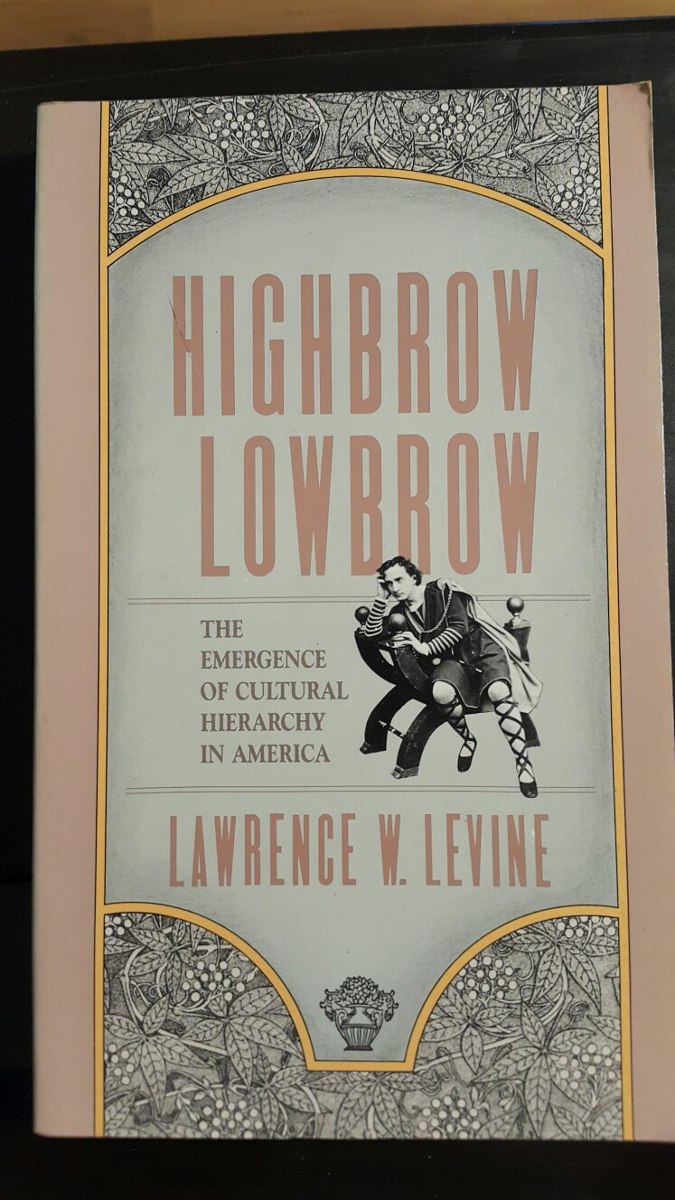

Levine finds such inflexible boundaries discouraging to the nation’s cultural growth. Buy a discounted Paperback of Highbrow/Lowbrow online. The “defiant pluralism” of culture in recent years, as in the early nineteenth century, is being countered, he says, by a strict, Arnoldian view of cultural value, advocated by William Bennett and Allan Bloom, among others. Booktopia has Highbrow/Lowbrow, The Emergence of Cultural Hierarchy in America by Lawrence W. Highbrow/Lowbrow: The Emergence Of Cultural Hierarchy In America by Levine, Lawrence W. Highbrow/Lowbrow: The Emergence of Cultural Hierarchy in America. Levine challenges the idea that there are a fixed number of great cultural artifacts worthy of study by the serious student. Black Culture and Black Consciousness: Afro-American Folk Thought from Slavery to Freedom. Highbrow/Lowbrow: The Emergence of Cultural Hierarchy in: Levine, Lawrence W.

The epilogue to Highbrow/Lowbrow brings this argument directly to the center of what has been called the Great Books Controversy. You searched for: highbrow lowbrow (title). Other art forms were demoted to the level of cheap, popular entertainment. The final chapter of the book charts the development in America of this new, stricter definition of culture, which Matthew Arnold expressed most clearly: “the best that is known and thought in the world.” In the last years of the nineteenth century, Levine explains, there occurred an elevation of “the best” that placed high culture on nearly a sacred level. The debate was less about who should enter a museum or theater than about what the purpose of the cultural arena was in the first place the result was that those who considered themselves educated and cultured attended “serious” events, while the rest went to popular farces and pantomimes. His performance precipitated the Astor Place Riot, in which at least 22 persons were killed and 150 wounded.Īs the century wore on, culture became more strictly defined and less tolerant of popular entertainment.

Levine’s first chapter presents evidence that 19th century Americans of all social classes enjoyed Shakespeare as an integral part of their culture and entertainment. Every once in a great while, a historian poses a question that, at least on the surface, appears so broad or unfocused that addressing it would seem unfeasible or even foolhardy. In 1849, when the English actor William Charles Macready and the American Edwin Forrest were appearing at the same time in rival productions of Macbeth in New York, Macready was met by hostile crowds chanting, “Three groans for the codfish aristocracy,” and by a deluge of fruit, eggs, and chairs. Throughout Highbrow, Lowbrow, Levine defines culture as a process rather than a fixed entity, and as a product of interactions between the past and the present. (1988) Highbrow/Lowbrow: The Emergence of Cultural Hierarchy in America. Cheering, whistling, and climbing onto the stage, nineteenth-century audience members were often as much part of the performance as the artists themselves.


 0 kommentar(er)
0 kommentar(er)
